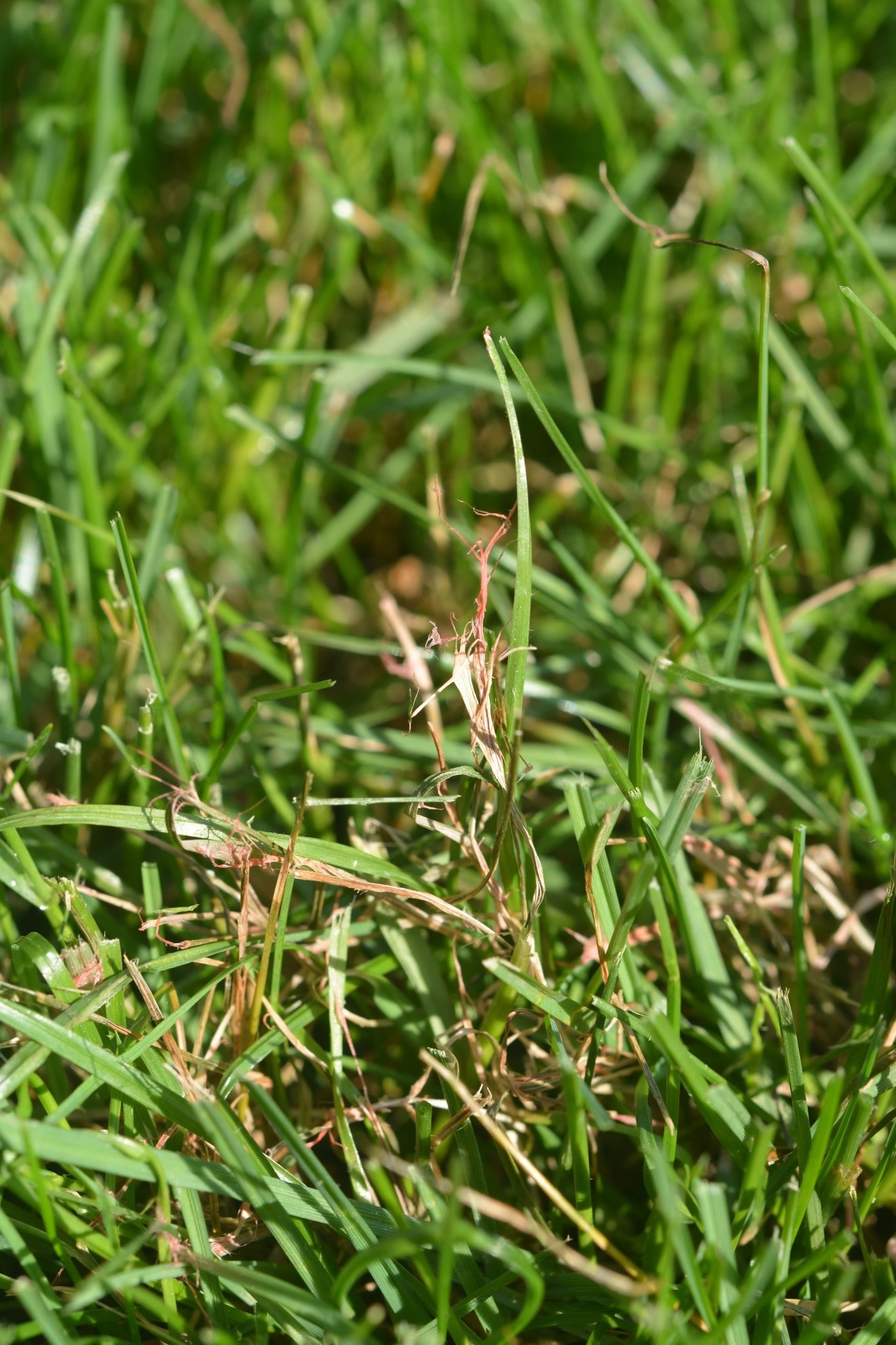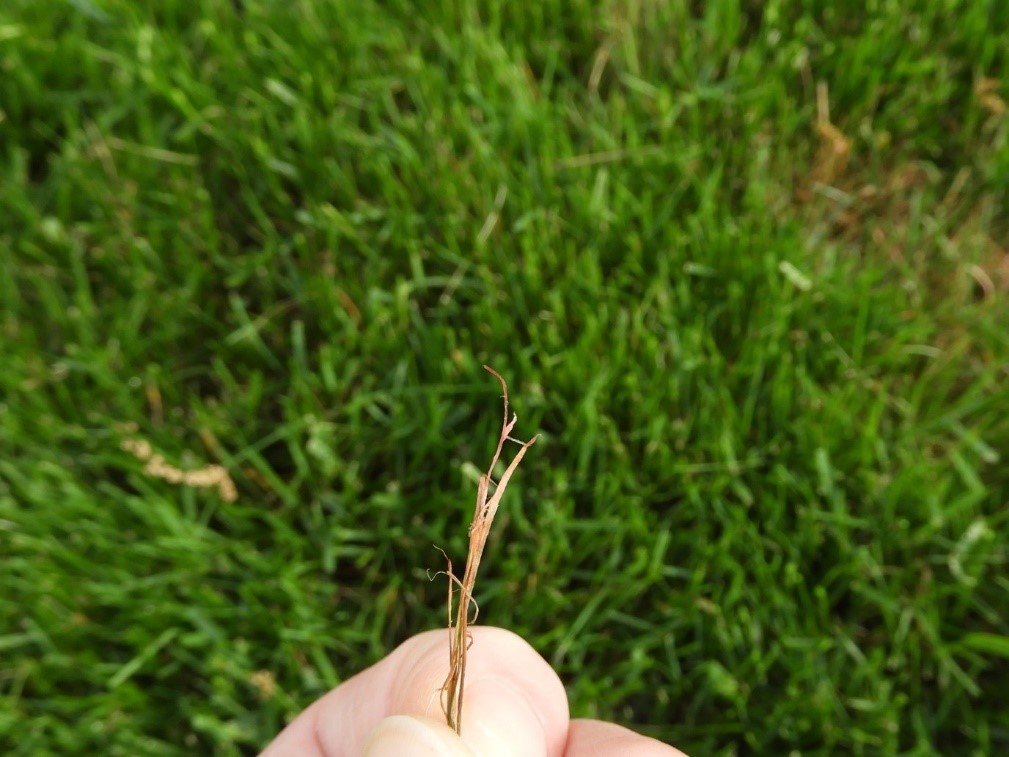Issue 3, May 20, 2019
Red Thread
Red thread is a turf disease named for the thread-like structures produced on the tips infected grass blades. It is a foliar disease that usually occurs on tall mown turfgrasses during the spring and fall. This disease is particularly common on slow-growing, nitrogen-deficient, fine-leaf fescues and perennial ryegrass. Outbreaks are favored by cool (60 to 75 degrees F), wet periods coupled with extended overcast conditions.
From a distance, red thread infections appear as circular patches of tan or pink turf. Patches generally range between two and eight inches in diameter. Upon closer inspection, the infected turf will have distinctive, pink to reddish thread-like fungal growth (sclerotia) emerging from the leaves and sheaths. As the disease progresses and more of the turf turns dry and tan, the pinkish fungal growth stands out even more and begins to look like red threads. These threads drop into the thatch, allowing the pathogen to survive for long periods.

Red thread patches

Red thread

Red thread sclerotia protruding from infected grass blade
Control practices may include:
- Maintaining adequate nitrogen fertility to reduce the severity of the disease.
- Increasing light penetration, air movement, and promoting rapid drying of the grass surface
- Mowing frequently at the recommended height for the turf species.
- Mowing with sharp blades to minimize wounding of leaf tips.
- Collecting grass clippings (and threads) during periods when the disease is active.
- Use of fungicides.
The use of fungicides may be justified where red thread has been particularly severe. Apply a suggested fungicide during wet weather in the spring and fall, when daytime temperatures average between 65 and 75. Begin applications when the disease is first evident. QoI fungicides (azoxystrobin, fluoxastrobin, pyraclostrobin, trifloxystrobin) and flutolanil are particularly effective. Homeowners have access to fungicides with myclobutanil, propiconazole, and thiophanate-methyl as their active ingredients.
Author:
Travis Cleveland